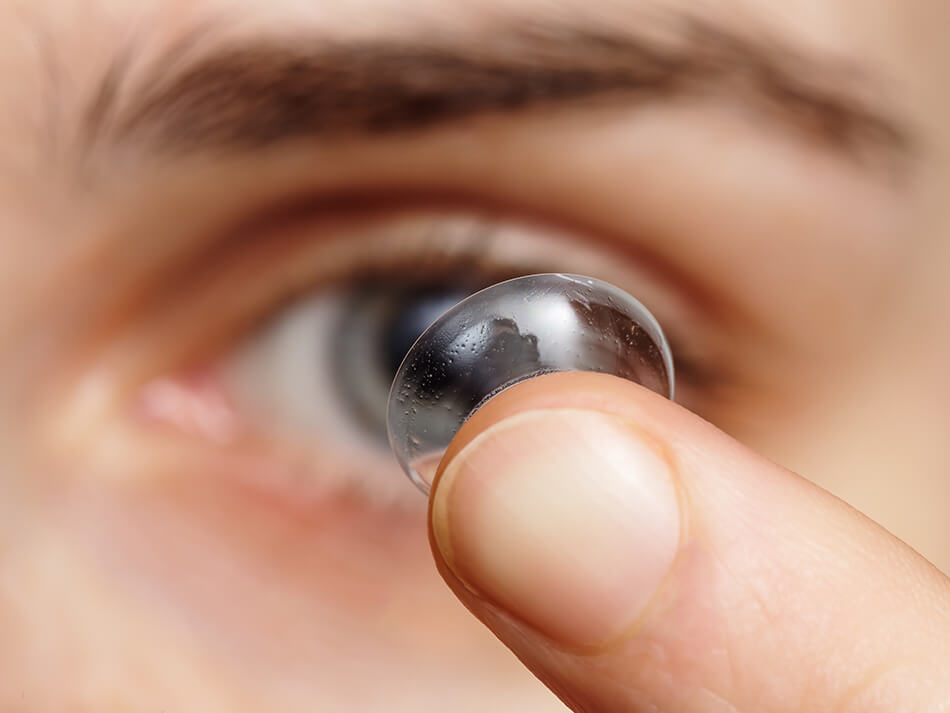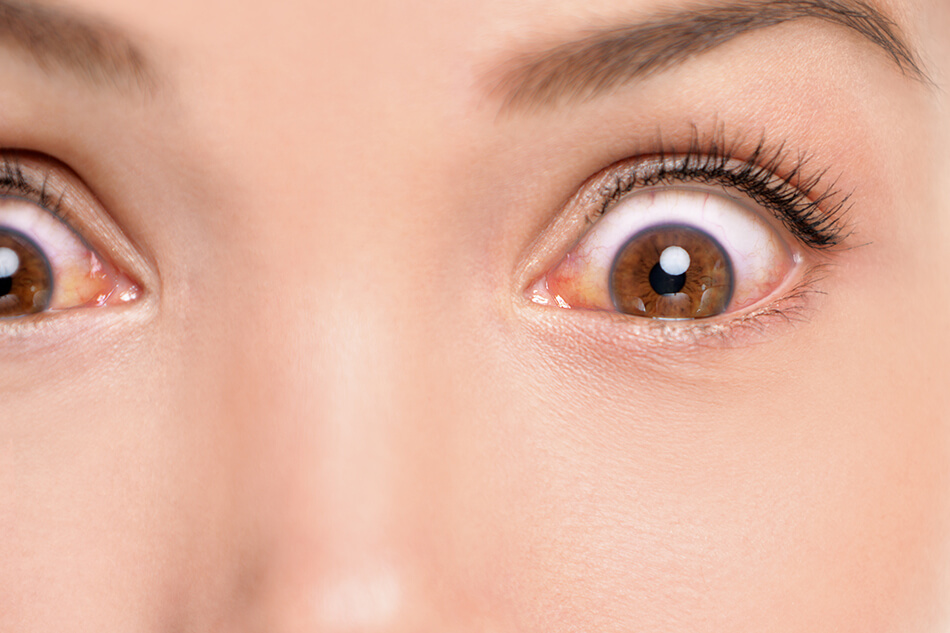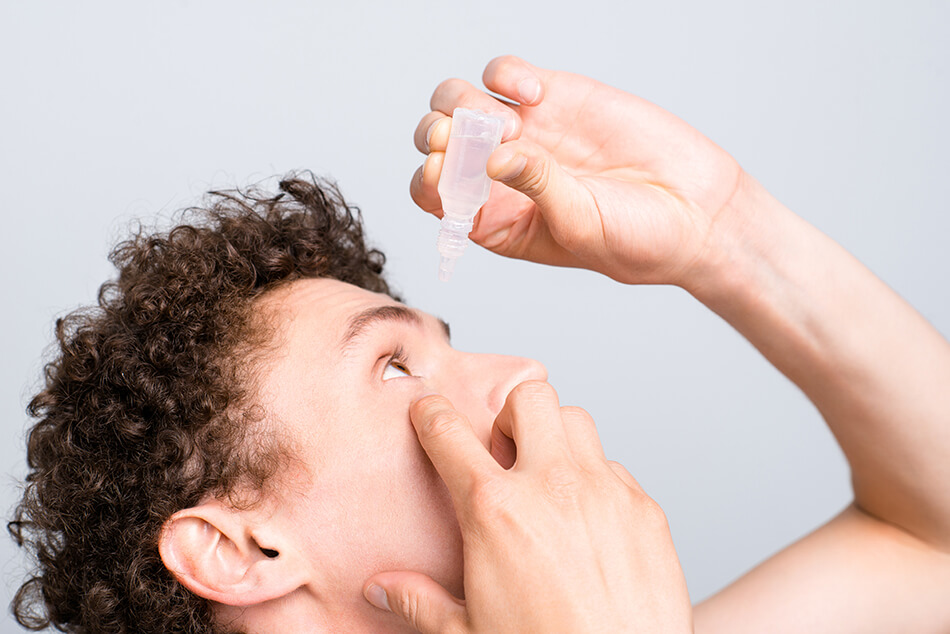Everything You Need to Know About a Contact Lens Eye Infection

If you think you're suffering from a contact lens eye infection, then read this. Read this! It'll tell you exactly how to handle and prevent one from happening again.
If you wear your lenses longer than you should, top off the old solution in your case instead of replacing it, or sleep with your lenses in, you're not alone. Almost 100% of contact lens wearers in the U.S. engage in these risky lens habits.
If you're not among the third of the contact lens wearing population who have sought medical treatment for an infection thanks to one of these habits, count yourself lucky! Any one of these bad lens habits can lead to a contact lens eye infection, and they can be incredibly painful and hard to get rid of.
Keep reading to learn everything you need to know about eye infections, and what to do if you've been hit with a contact lens eye infection recently.
What Is an Eye Infection?
Contact lenses in and of themselves are perfectly safe for you to wear, as long as you're taking care of them properly. Improper care can lead to a contact lens eye infection.
There are a few different types of infections you can contract due to improper care.
First, you're at a high risk for keratitis, which is a corneal infection. This is also sometimes called corneal ulcers. The cornea is the outer cover on your eye - the surface on which your contact lens sits -and if permanently damaged, transplants can run you $13,000 minimum.

You can also contract bacterial, fungal, or parasitic infections, and viral diseases that can lead to keratitis and a whole slew of other eye ailments. The easiest of these to treat is pink eye, and the most difficult, trachoma- it can lead to blindness.
Symptoms of a Contact Lens Eye Infection
If you're experiencing any of the following symptoms as a contact lens wearer, seek medical attention at once:
- Extra tears
- Eye discharge
- Dry eyes
- Sensitivity to light
- Burning or itching in your eye
- Pain in eye
- Blurred vision
- Redness or swelling in the eye
- Swelling around the eye
Besides these symptoms, an unshakeable feeling that something is in your eye could be a sign of an infection, too. Don't dig around for a hidden eyelash - head to an ophthalmologist as soon as possible.
Types of Infection
As mentioned, there are four main types of eye infections from contact lenses: bacterial, viral, parasitic, and fungal. Some are easier to treat than others, but almost all of them have treatment options that lead to a full recovery.
Bacterial
The word "bacteria" isn't always bad. In fact, we carry an average of 150 different species of bacteria on our hands at any given moment. Bacteria becomes bad when certain types combine and get into places they're not supposed to be, like your eyes.
For instance, many people carry the Staphylococcus aureus bacteria in their nasal passage, and it's harmless there. Once that gets into your eyes, though, it can lead to infection. This is one example of why it's so important to wash your hands when handling your contact lenses. The gnarliest of bacterial infections is called trachoma. It's not super common in the U.S., but is one of the most prominent causes of blindness in developing and third world countries. The tragedy here is that it's entirely preventable.
It's spread mostly through the drinking and using of unclean water and living in unsanitary conditions. Flies spread the bacteria further, making reinfection a big problem. Once the eye is scarred from infection, it usually leads to permanent blindness.
In the U.S., more common bacterial worries include the Pseudomonas aeruginosa bacteria. This bacteria can cause rapid corneal infection, leading to an expensive surgery and even permanent vision impairment if not treated quickly.
Luckily, most bacterial infections can be treated with oral or topical antibiotics. The key is catching them quickly.
Viral
The most common viral infection is conjunctivitis, more commonly known as pink eye. It's a super contagious and painful infection that also creates an excess of eye discharge. It's common in classrooms and daycares, since young children are usually still learning good hygiene.
Pink eye is easily treated by ophthalmologists, but often comes on due to unsafe contact lens practices.
Besides pink eye, the viral form of keratitis is a big issue when it comes to contact lens infections. Both bacterial and viral version of this infection exist. Keratitis can necessitate complete corneal replacement if not caught quickly.
Don't think that herpes only affects your mouth, either. While cold sores are unsightly, the herpes simplex virus can actually lead to ocular herpes. It's recurring, too, so this one is important to avoid.
Viral infections can't be cured - you'll have to wait for them to heal on their own. Your doctor or ophthalmologist will likely prescribe artificial tears or steroid eye drops to help with swelling and pain, though. A cool compress works wonders as you wait for these to pass.

Parasitic
Have you ever heard anyone mention that you shouldn't store or wash your contacts with water? Or that you shouldn't swim in your contact lenses? These rules are due to the risk of coming into contact with tiny parasites that can lead to Acanthamoeba Keratitis.
If you can't avoid swimming in contacts, be sure to take them out and disinfect them directly afterward to minimize your risk of coming into contact with any parasites. This isn't just in open water, either - they can be found in your hot tub, swimming pool, and even your tap water.
Infections due to parasites are really tough to treat and usually result in corneal transplants, so don't cut corners - follow these rules to the letter!
Fungal
Fungal eye infections are rare, but serious. The most common cause of this type of eye infection is an eye injury, especially one involving a plant such as a tree branch or thorn.
Fungal infections in the eye can lead to Endophthalmitis, which can lead to blindness if not caught quickly.
And if you're having cataract surgery anytime soon, make sure it's with someone very reputable, since you're at a higher risk for fungal infections after eye surgery.
What to Do if You Think You Have an Eye Infection
First of all, don't throw the offending contact lenses out. Bring them to the doctor with you so they can get cultures from them to see what's causing the infection.
Sometimes, your symptoms won't mean an eye infection. Eyeballs can have an allergic reaction to different types of lenses, so your lenses themselves could be the culprit of your symptoms. Bacterial and viral infections are easier to treat, while parasitic and fungal are tougher. If you're experiencing any symptoms of an eye infection, make an appointment with an ophthalmologist immediately because the sooner you catch it, the easier it is to treat.
Expect to be prescribed antibiotics, antiviral drops, steroids, or artificial tears to help heal your infection.
Avoiding an Infection
To avoid an eye infection due to contact lens misuse, make sure to follow your eye doctor's directions for contact lens care to the letter. Use fresh contact solution every day and keep your contact lens case clean.
Wash your hands before and after handling your contacts, and never sleep with your lenses in! You should also avoid showering or bathing with them in if possible. If you do need to bathe with them in, make sure to disinfect them afterward to avoid a parasitic infection.
Finally, read all the labels for care instructions on your contact lens box and cleaning solution. You'll be glad you did when your eyes stay healthy and strong!
Daily Contact Lenses
One of the best ways to avoid a contact lens eye infection?
Using daily lenses.
They require so much less care than monthly lenses, since you throw them away at the end of the day to open a fresh, new pack tomorrow.
Pick up your daily lenses today to worry less about an eye infection tomorrow!
